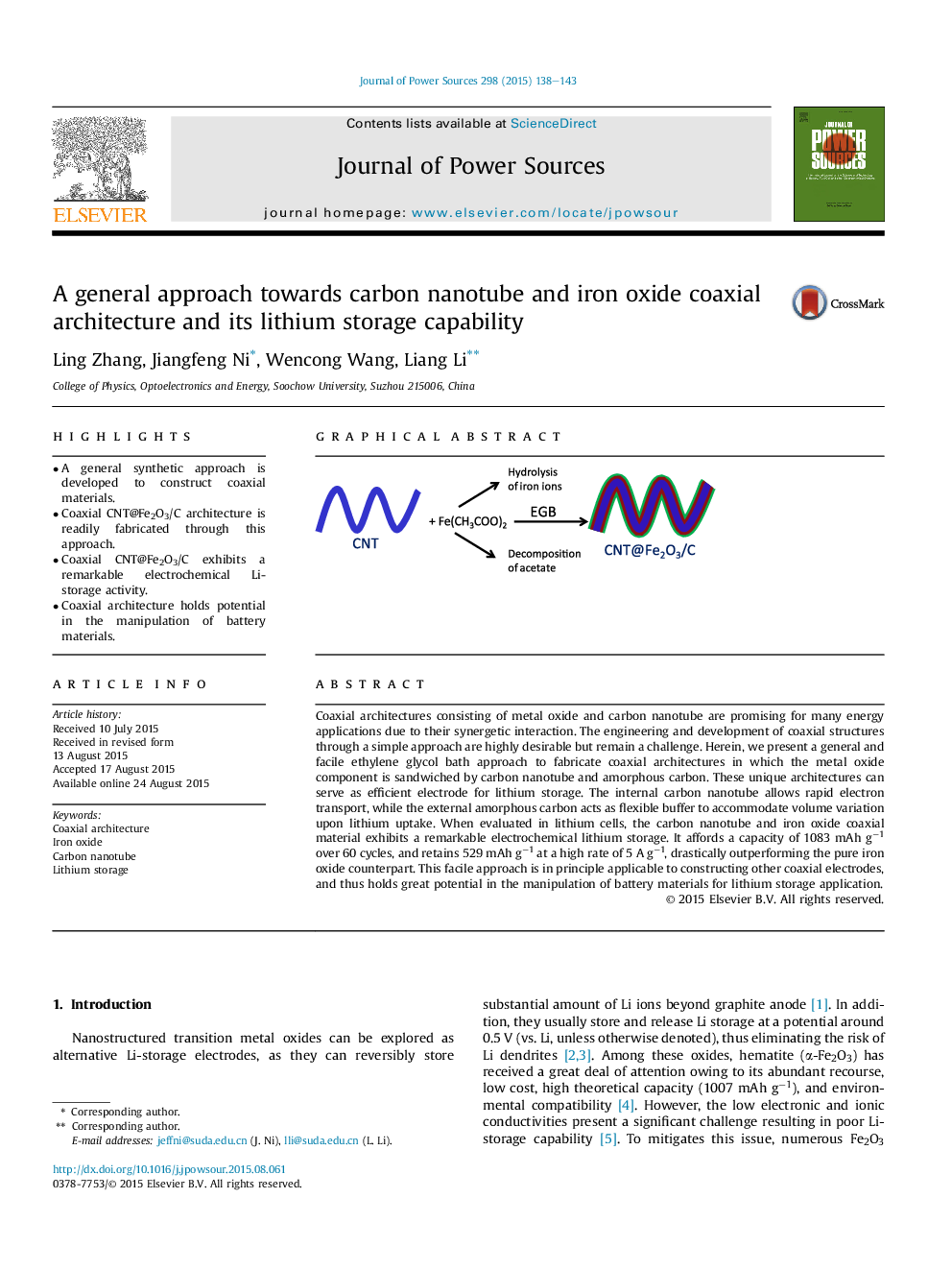| Article ID | Journal | Published Year | Pages | File Type |
|---|---|---|---|---|
| 1283828 | Journal of Power Sources | 2015 | 6 Pages |
•A general synthetic approach is developed to construct coaxial materials.•Coaxial CNT@Fe2O3/C architecture is readily fabricated through this approach.•Coaxial CNT@Fe2O3/C exhibits a remarkable electrochemical Li-storage activity.•Coaxial architecture holds potential in the manipulation of battery materials.
Coaxial architectures consisting of metal oxide and carbon nanotube are promising for many energy applications due to their synergetic interaction. The engineering and development of coaxial structures through a simple approach are highly desirable but remain a challenge. Herein, we present a general and facile ethylene glycol bath approach to fabricate coaxial architectures in which the metal oxide component is sandwiched by carbon nanotube and amorphous carbon. These unique architectures can serve as efficient electrode for lithium storage. The internal carbon nanotube allows rapid electron transport, while the external amorphous carbon acts as flexible buffer to accommodate volume variation upon lithium uptake. When evaluated in lithium cells, the carbon nanotube and iron oxide coaxial material exhibits a remarkable electrochemical lithium storage. It affords a capacity of 1083 mAh g−1 over 60 cycles, and retains 529 mAh g−1 at a high rate of 5 A g−1, drastically outperforming the pure iron oxide counterpart. This facile approach is in principle applicable to constructing other coaxial electrodes, and thus holds great potential in the manipulation of battery materials for lithium storage application.
Graphical abstractA general ethylene glycol bath approach is developed to construct coaxial carbon nanotube (CNT)/Fe2O3/carbon (CNT@Fe2O3/C) nanocomposites, which can be employed as efficient lithium storage electrode for battery application.Figure optionsDownload full-size imageDownload as PowerPoint slide
